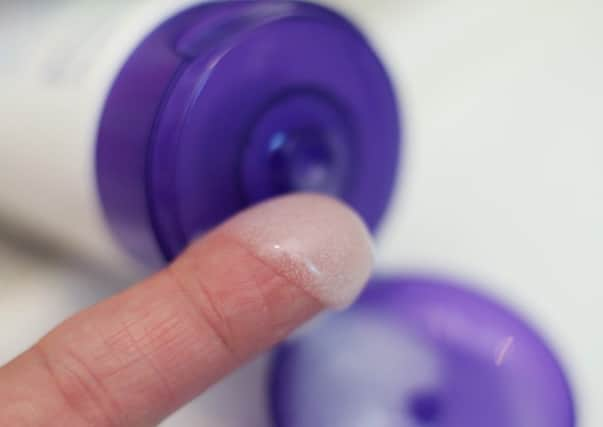Ilona Amos: Balancing protection for us and the environment


However, there is a raft of evidence building up that many of our most commonly used cosmetic and personal care products contain ingredients that harm the environment, particularly sealife, once washed down the drain. Some also pose a risk to human health, either directly or once in the food chain.
You’ve got parabens, used as preservatives in make-up and moisturisers, and plasticising chemicals in nail varnish. These affect hormone function and possibly cause genetic mutations in aquatic creatures.
Advertisement
Hide AdAdvertisement
Hide AdThen there are silicones in hair care and anti-aging preparations, which build up in fish and can even escape into the air. And antibacterial products such as mouthwashes, cleansers and antiperspirants often contain Triclosan, another suspected endocrine disrupter and a possible driver of antibiotic resistance in bacteria.
Another problem is artificial fragrances, which can trigger allergies and asthma and have also been linked to cancer and nerve damage. Some are also harmful to wildlife.
And of course there are microbeads, minute particles of plastic added to body scrubs and toothpastes to give an abrasive quality. These are so small that they get through sewage systems and end up polluting waterways and oceans. As much as 86 tonnes of the tiny fragments are flushed into the environment in the UK each year from beauty products, according to the latest research. They are often eaten by fish, mistaking them for food, and then by us.
Scotland has been basking in unseasonably warm and sunny weather in recent weeks, with temperatures in some places soaring above Mediterranean levels. It has been the signal sun-starved northerners have been waiting for, offering a rare chance to cover the blue undercoat and get a dose of vitamin D.
But at the same time we’re warned of the threat from over-exposure to the sun – it’ll age our skin, give us cancer. Slap on the factor 50, we’re told, and ignore this advice at our peril.
As with everything, there is a downside to sunscreens. Many contain nasties mentioned above. Concerns have also been raised over nanoparticles found in certain products. There are also chemicals proven to exacerbate bleaching of coral reefs linked to climate change.
So what is a peely-wally Scot to do? Exposure to UVA and UVB rays is the leading cause of skin cancer, but how can we balance protecting ourselves with protecting the environment?
The good news is that we are now seeing an increasing number of products coming to the market with green credentials. A new one, made by a French firm and aimed at surfers, claims to be the first sunscreen range certified as non-toxic to coral reefs and the marine environment. It also contains no parabens, chemical filters, endocrine disrupters and nanoparticles, and has not been tested on animals. It sounds almost good enough to eat.
Advertisement
Hide AdAdvertisement
Hide AdFor those who eschew cosmetic interventions, there are a few other options. You could take a dip in the sea only at dawn and dusk, or perhaps drape yourself in blackout curtains.
Personally I think it’s time for a return to the Victorian-era full-body bathing attire. Or the modern equivalent – a wetsuit. This has the added benefit of insulating against the heart attack you’ll get upon hitting the freezing water.